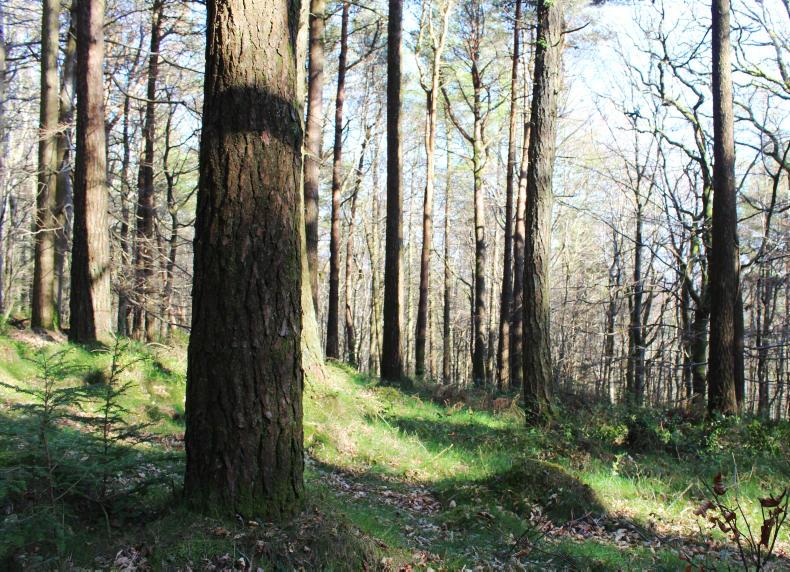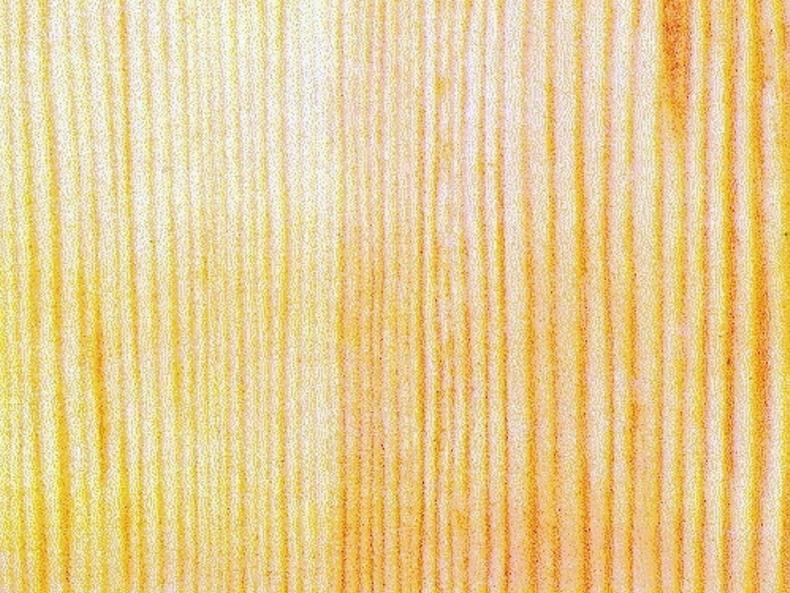When speakers at this year’s national forestry conference were asked for a list of alternative conifer species to Sitka spruce, Scots pine figured prominently. Scots pine received support because it is native, has good site adaptability and market potential.
Even though foresters, forest owners and sawmills are well disposed towards Scots pine, it is not widely planted in Ireland. Only 8,010ha of Scots pine woodlands and copses were recorded in the National Forestry Inventory 2010-2012, which amounts to 1.3% of the total forest area.

Heritage tree
The presence of Scots pine stumps at the base of bogs demonstrates that it “must have been widespread in Ireland” 6,000 years ago, according to Frank Mitchell and Michael Ryan in Reading the Irish Landscape. Although the authors claim that it probably died out in the early Christian era, Scots featured as one of the airig fedo or ‘‘nobles of the wood’’ in Brehon Law which lasted until the 16th century, but gradually replaced by English common law after the arrival of the Anglo-Normans in 1169.
It is likely that some trees survived from that period but its establishment as a forest tree in the 18th century depended on imported seed and planting stock from Scotland. It featured prominently in afforestation programmes from 1920 to 1951. For example, 38.5% of the 1945/46 planting programme comprised Scots pine.
It is rarely planted now although there has been renewed interest in Scots pine in recent years, especially as it features as one of the species in the Forest Service Native Woodland Establishment (NWE) scheme.
The objective of NWE “is to support the creation of new native woodland on open greenfield sites by farmers and other landowners, in order to promote the expansion of Ireland’s native woodland resource and associated biodiversity”.
Important benefits “include landscape enhancement and cohesion, the strengthening of the cultural and historical heritage associated with Ireland’s native woodlands, and the provision of local amenities and opportunities for woodland interpretation and environmental education”, according to the Forest Service. While Scots pine fulfils aesthetic, environmental and other non-wood criteria, it has economic benefits and is acknowledged as one of the NWE species “suitable for growing quality timber and other wood products on an ongoing long-term basis”.
Adaptable tree
Apart from possibly alder and birch, it is the most adaptable of the native species. It grows well on a wide variety of soil types including acid brown earths and light sandy non-alkaline soils. It also shows potential on low-nutrient sites including cutover midland bogs, while Cyril Hart in Practical Forestry maintained that “it can be grown almost anywhere” including “dry heath sites” where afforestation is rarely practised in Ireland.
Heavy wet mineral and limestone soils should be avoided. It withstands a reasonable amount of exposure but like most species will not perform well where exposure is excessive especially on very high elevations and on sites directly exposed to sea winds.
Scots pine is relatively easy to establish and is frost hardy. It can be used in mixtures with broadleaves (oak and beech) and conifers (Norway spruce, larch and possibly Sitka spruce). However, mixtures are difficult to manage. For example, in Scots/spruce mixtures on very dry sites, the pine can dominate while the reverse is true on moist sites.
Scots pine grows rapidly during the first few years, so vegetation control may be necessary, at most, once. Stocking at 2,500 stems per hectare, or 2m spacing, is the same as other conifers. Plants should be sourced from seed collected in Irish and Scottish seed orchards and registered seed stands to qualify for NWE.
Timber tree
Referred to as red deal in the timber trade, Scots pine is suitable for a range of internal high-value end uses because it finishes well and has an attractive colour and grain pattern. Internal uses include furniture, joinery, skirting and stairways.

Externally, it is ideal for fencing posts, gates, railway sleepers and transmission poles if treated with preservatives. Low-value uses include wood chips and sawdust for panelboard manufacture and energy generation. Although the market for Scots pine is limited in Ireland, it is strong throughout Europe where it is widely used and grown, especially in Scandinavia.
Commercial tree
As an NWE species, Scots pine produces higher yields than most native broadleaves. However, yields are well below conifers such as Sitka and Norway spruce, and Douglas fir.
Yield class 14 (m3/ha/annum) can be achieved but six to 10 is the most likely range which means that rotation lengths of 60 to 90 years are likely.
Future tree
Low productivity is the main reason foresters and forest owners shy away from Scots pine. Its long rotation places it close to native and non-native broadleaves. Foresters maintain that it should be treated similarly to oak and other native broadleaves in the NWE scheme, which would require an increase of 10% to 12% in grant and premium payments.
This would provide partial recompense for establishing a species that has undoubted biodiverse and heritage benefits but low productivity and, as yet, limited commercial potential.






 This is a subscriber-only article
This is a subscriber-only article










SHARING OPTIONS: